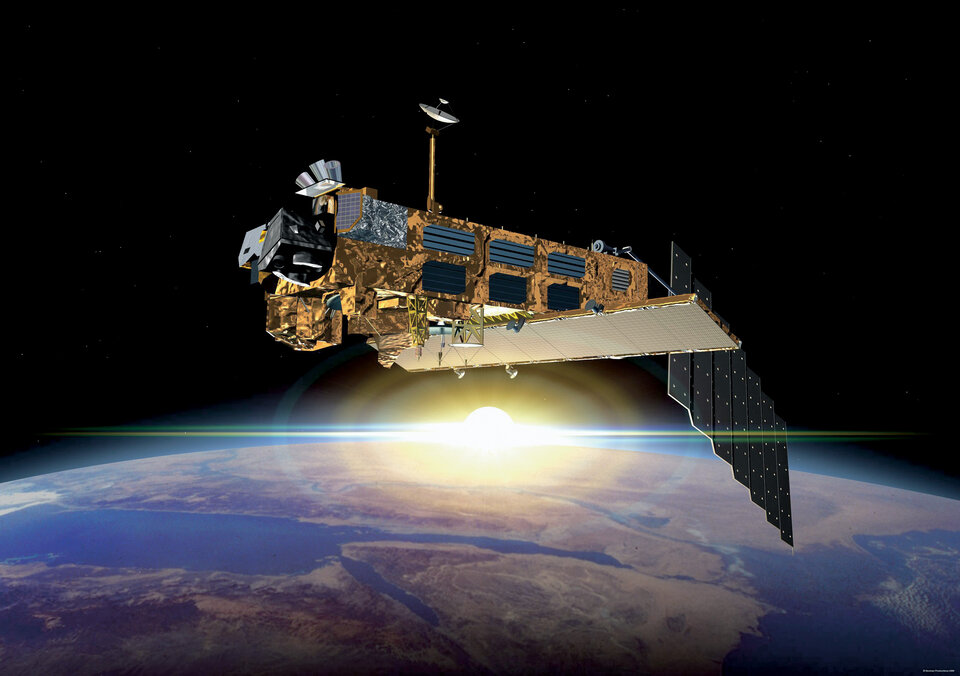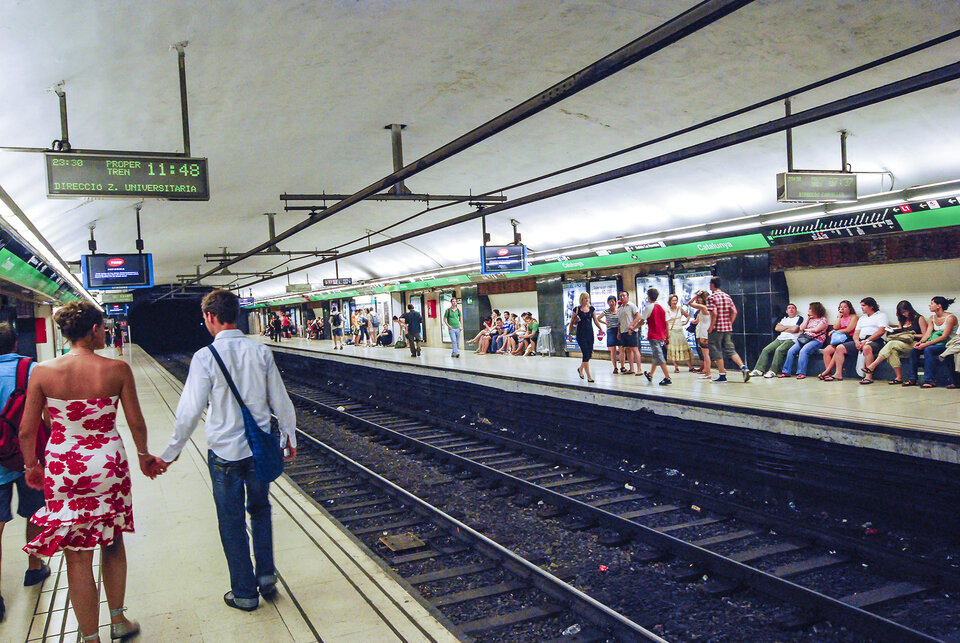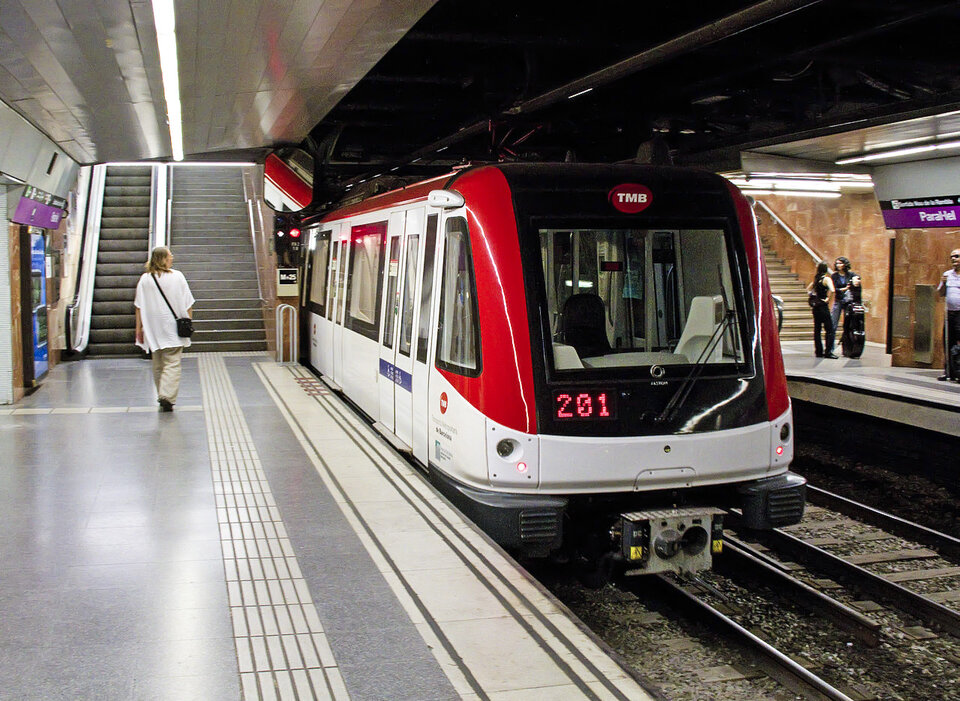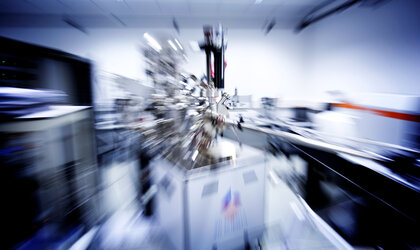Tracking trains with satellite precision
Taking a cue from how ESA controls satellites, Spanish railways now have their own high-tech upgrade to keep travellers abreast of when the next train is going to pull into the station.
Drawing on sophisticated software that keeps satellites on track, the system was developed by a group of Elecnor Deimos engineers who had worked extensively on ESA projects.
The outcome of this technology transfer is that up-to-date train schedules are now displayed at over 400 Spanish stations.

“This came about as a result of the team’s work with ESA’s largest satellite, Envisat,” said Carlos Fernández de la Peña, Director of Systems and Networks at Deimos.
For Envisat, they created a software system designed to cope with the vast complexity of planning the satellite’s operations: “It had to be robust, reliable and work 24/7. There is no room for error when it comes to satellites.”
For instance, Envisat operators had to monitor 20 000 readings continuously to operate and control the satellite.
Spin-off from space

Since its creation in 2001, Deimos Space, now part of Elecnor Deimos, has been spinning off the space technologies and techniques acquired by its involvement in space projects
“What we’ve done is take the experience of working with large, distributed, reliable, computer-based satellite control systems and apply it to non-space fields.”
ESA’s Technology Transfer Programme technology broker for Spain, Tecnalia, collaborates closely with Elecnor Deimos, through ProEspacio, the Spanish Association for Space Technologies, to develop ‘spin-off’ opportunities.
Tecnalia’s Richard Seddon explained, “We help in the search for clients for their often leading-edge and intelligent spin-offs from the technologies and expertise developed for space missions.”
“Matching these spin-offs with identified needs in non-space industries, in this case, resulted in a successful contact with Adif, the company managing Spain’s railroad infrastructure and rail traffic.
“Adif were faced with serious problems tracking all the trains within their system, and we thought this is very much like the tracking requirements for satellites.”
Satellite operations help train passengers

To know where all the trains are at any time, the Deimos engineers drew on their space experience, noted Mr Fernández de la Peña: “For Adif, we have created a computer system similar to the monitoring and control system of a satellite.”
“The first thing we did was get railway traffic information in real time. From there, there were more questions to answer. Are the rails ready? Which trains are using the rails in which direction? Is there a delay? What are the destination platforms? Is there any problem at a station a train is going to pass through? This looks easy, but it is not.”

The challenge was to take “millions of chunks of data received in real time – this train is here, this train is not, there is a green light, there is a red light” and create an artificial intelligence engine that can process this information, then relay the important facts to travellers.
Deimos used software routines similar to those used for Envisat: “This way, we can process lots of data in real time. It’s like a small ground system for the railway system,” said Mr Fernández de la Peña.
Now, with hundreds of stations in Spain using their system, they have created an information centre that tracks how things are moving and what situations are developing in the network. Exact information is then broadcast to the travellers.

In addition, Deimos introduced a set of protocols similar to those used by ESA. Previously, a patchwork of software systems from different providers was used. The problem with that is that, “If several different companies are processing the same information in different ways, you can come up with different results. Then, you end up giving information that is not accurate or consistent.”
To correct this, they created Elcano, a streamlined platform for Adif: “We designed and implemented the standards used at ESA.”
Valentin Gonzalez, Deputy Director of Operating Systems and ICT in Adif, confirms that, “During the last years we have made a significant effort in upgrading Adif’s information technology infrastructure and technology, aiming at creating a system of open and interoperable protocols and services for internal use.

“Elcano is the response for standardising the way information is being provided to passengers, as well as managing the sometimes-complex infrastructure of railway stations throughout Spain.”
“From ESA, we had experience of working in large, complex operating systems,” Mr Fernández de la Peña noted. “Now, we’re using this experience and credibility to create this well-performing transportation platform.”
More on ESA's Technology Transfer Programme here





